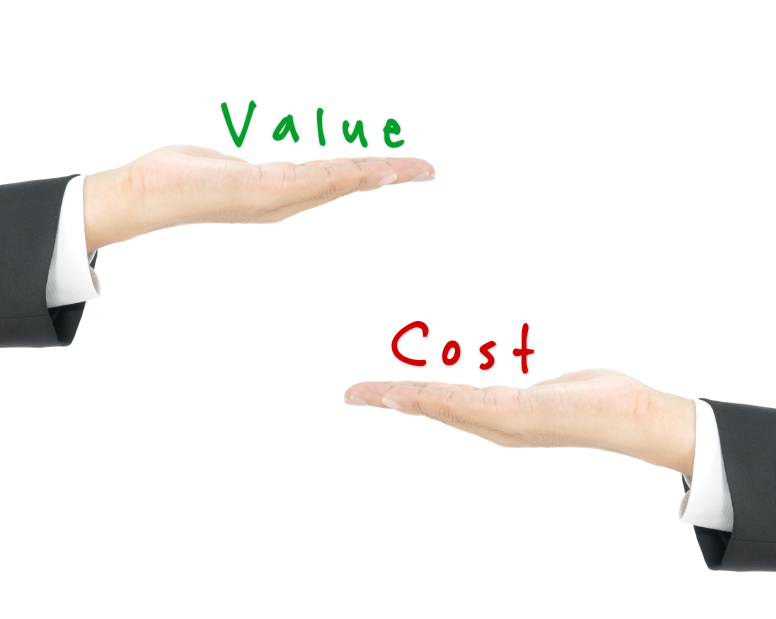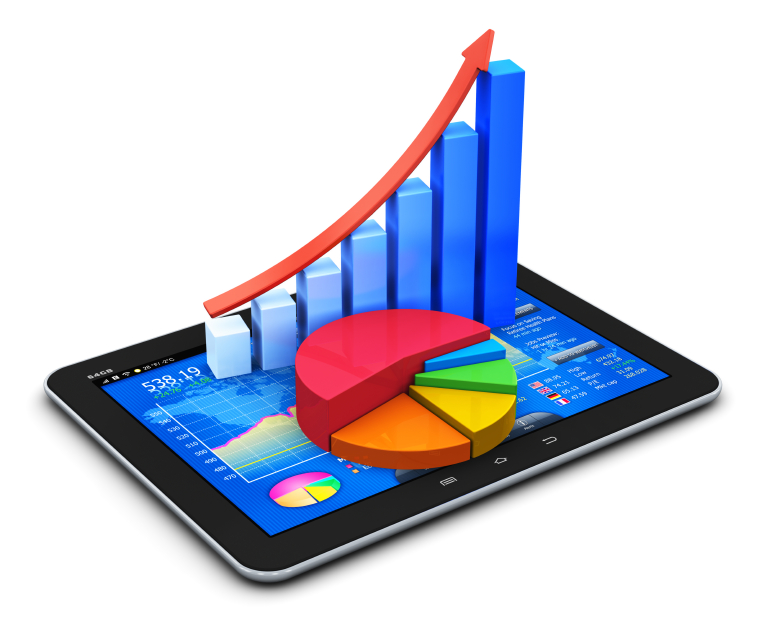“Market Pull results in higher marketing and sales ROI than Market Push and makes everyone’s life a lot easier. Ask B2B business owners which they would prefer, and you’re unlikely to find anyone that wouldn’t prefer to have customers lined up at the door asking to buy their products than having to coax them out of the brush to engage.”
Market Push
Market Push is exactly what it sounds like – aggressively pushing and promoting of your product to any and all that will listen. After all, customers can’t buy your products if they don’t know they exist. So, marketing must become obsessed with “getting your name out there”.
Right?
Well, not really. That obsession makes Market Push programs expensive and many times ineffective.
An all-out “get-our-name-out-there” initiative can lead a B2B marketing team to commit a lot of cash, time and energy to a scattered range of unfocused activities: a new branding program, a revamped website, new logo and newly-minted tag line, a blitzkrieg of trade shows, radio ads, an SEO initiative, a blast of pop-up on-line advertising or an aggressive social media program.

Source: Douglas Wray on Instagram, via Daring Fireball
I have seen firms spend in excess of 7 figures on Market Push programs with virtually no measurable results.
It’s a fall back, non-strategic shotgun approach. And, even if it works a bit, it typically generates a widely diverse range of customers. The consequences are that the firm doesn’t know where to focus next. They will likely be pulled in many directions by different special interests within this new, wide customer base. They cannot decide how to evolve their product offering road-map or what specific message to promote to whom. Debate can get heated. Spread too thin, they can become vulnerable to more focused competitive initiatives.
There is a much better way.
Create Market Pull
Now, contrast Market Push with the phenomenon of Market Pull.
After initially trying and failing with a Market Push program, a B2B client shifted to a focused Market Pull program and grew their customer base by three orders of magnitude in just under three years. The initial impact of the switch was seen in less than 120 days. Another customer hit two orders of magnitude in six years.
The question is this: How does one create market pull of these magnitudes? The compound answer may seem counter-intuitive, at first look.
It’s: Focus and Leverage
Market Focus: Tapping into the Natural Leverage of the Market Ecosystem
Each target market is a community. Each community has a natural architecture. We call this target market architecture the Target Market Ecosystem or TME. While all TME architectures are virtually the same in basic structure, (see below), each is unique in what’s inside the nodes.

Creating market pull is about building a reputation for delivering outstanding value to Economic Decision Makers in a specific target market ecosystem, then fanning the flames of the communication of that value proposition between peers, referral sources and through the other network nodes.
Within any TME, the ultimate goal is reaching Economic Decision Makers with your compelling value proposition.
For economically impactful purchases in the B2B world, Economic Decision Makers commonly look to knowledgeable, experienced people they trust within the market ecosystem for advice and recommendations. Filling those advisor roles are peers, technical specialists, lawyers, accountants, consultants and Board Members. We classify this group of advisors as Key Referral Sources.
Within that same TME community, there are also Opinion Leaders – those few knowledgeable folks who seem to always be at the front edge of new ideas. They might not hold a direct, open communication line to the Economic Decision Maker, nonetheless, they typically have significant indirect influence on them through their Key Referral Sources.
The most impactful Opinion Leaders are characterized by four traits.
- They are Fanatic Believers in your value proposition
- They are Well-Networked within the target market ecosystem
- They have High Credibility with Key Referral Sources and Economic Decision Makers
- They are Natural Sales People, anxious to communicate what they know and believe, to all willing to listen.
Also within this community infrastructure are a couple of non-people nodes – Venues and Vehicles. Venues are the real and virtual places where people in this ecosystem meet and dialogue: society meetings, trade shows, on-line groups, peer-groups, conferences, industry events and seminars.
Vehicles are the means through which people discover new information: webinars, blogs, podcasts, talks, videos, articles, industry journals and whitepapers.
The arrows in the ecosystem diagram, represent the directions of influence of each node.
It’s A Universal Dynamic
The social influence dynamics of a target market ecosystem are at work for everything bought by anyone. Its ubiquitous existence was clearly demonstrated in social research compiled by Professor Everett M. Rogers in his book “The Diffusion of Innovations” (Free Press, 1995). From community adoption of health practices in villages in the Andes, to the fan-out of new techniques for educating children in math in Pittsburg, to the adoption of high-tech products, the TME is the engine that drives adoption.
It’s Underlying Structure is Ubiquitous
The market ecosystem architecture for Hospitals is the same structure as that for Fire Departments – and every other industry. Yet, each individual TME is, for the most part, self-contained. Within it swirls the internal dynamics of market-specific issues, market-specific peer-to-peer communications, influencers, opinion leaders, venues, and industry journals spouting their own unique industry lexicon.
This insular characteristic means the Director of a Hospital, is not likely to hang out with, or seek the advice of, the Chief of the Boston Fire Department regarding how to select computer monitors for their delivery rooms. She will most likely, ask a peer at another hospital or a hospital IT specialist first.
Leverage: Kick-Starting Your Value Proposition Communication Multiplier (VPCM)
Your VPCM is the fuel that powers growth in a TME.
Social science research shows that “node-based”, intra-community communications is 13 times more effective than mass media in getting a value proposition message to go viral within a TME.
Having one of your happiest customers communicate the exceptional value delivered by your approach to solving their problem in a venue talk to 25 or more of her peers is an example of your Value Proposition Communication Multiplier (VPCM) in action.
The VPCM is most powerful within an ecosystem and, occasionally can even jump from one ecosystem to another. It drives market pull and sells for you when you are not in the room.
Opinion Leaders are important communication and influence nodes. One Opinion Leader can influence dozens, or even hundreds of Economic Buyers or Referral Sources in a specific TME.
Key Referral Sources are influence and communication nodes for your VPCM.
Venues and Vehicles are also VPCM communication and influence nodes.
“Strategically injecting an ecosystem-validated value proposition message at the right communication nodes is the key to creating market pull.”
What You Can Do Immediately
Here are three actions to create market pull in your corner of B2B world.
1. Focus
Select a target market where your value proposition has been validated to deliver higher economic value to customers than any other segment. Be sure the market has some economic momentum, lots of customers with a common problem your offering fixes and a well-established, easily identifiable TME.
2. Map that Market’s Ecosystem
Identify the Economic Decision Makers by title, Key Referral Sources by the same, Opinion Leaders, Venues and Vehicles.
3. Target your value proposition story at communication nodes within the TME
Build your story and marketing plan around your proven, delivered value proposition in that specific sector. Then proceed to place that message through blogs, articles, talks, referrals and presentations at the Nodes of the TME to get the natural lift that each TME offers.
Don’t get antsy. If you do it right, and your value proposition is real, then you should begin to see results in no more than 160 days. If you don’t see results something is amiss – and whatever it is, it’s not anything that could be fixed with an expensive Market Push Program.
*****
Jerry Vieira, CMC is the President & Founder of Jerry@qmpassociates.com. Read more about Jerry on LinkedIn and follow him on Twitter at @JerryatQMP













